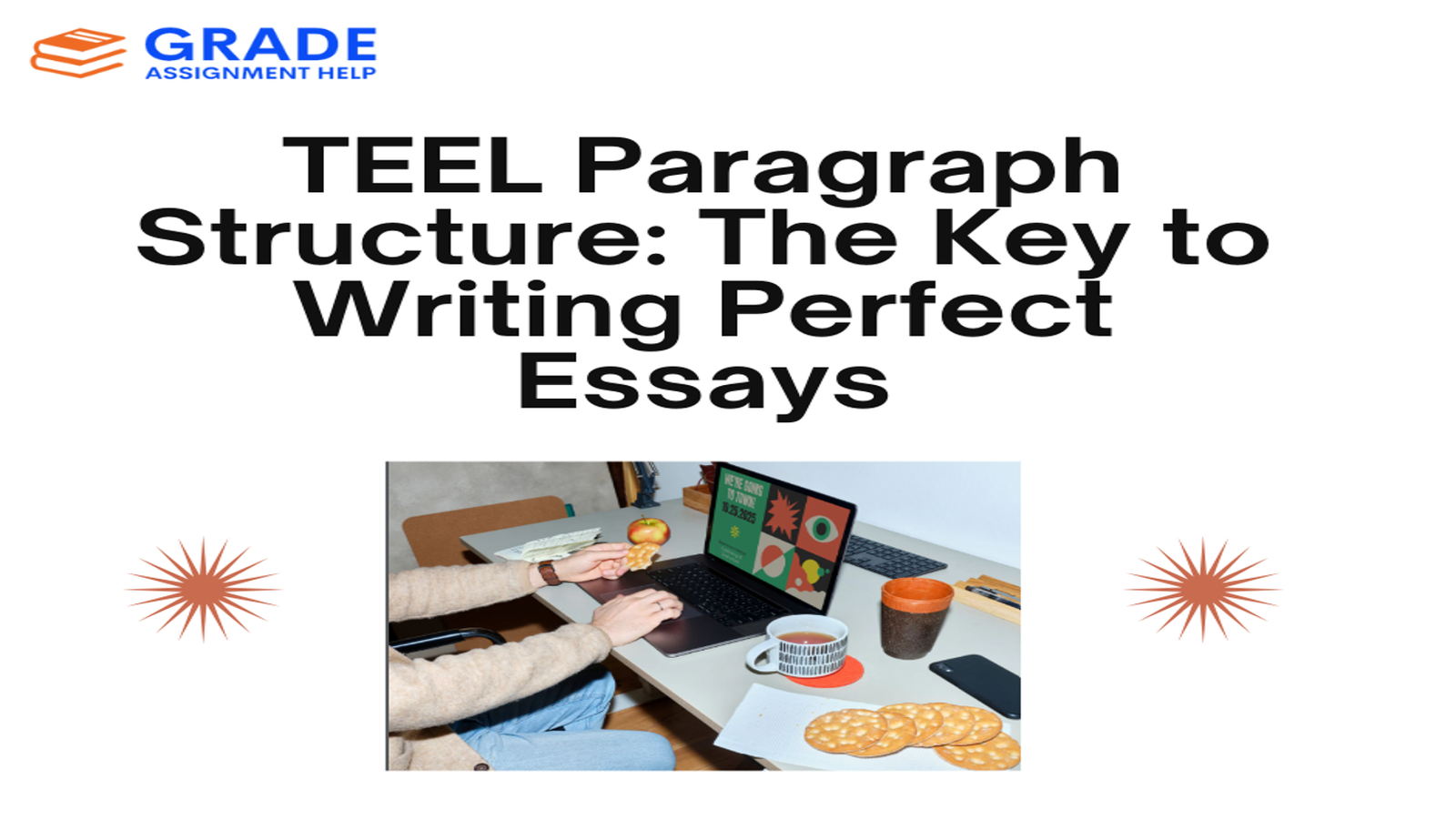

Essay writing is a crucial skill that every student needs to master, and structuring paragraphs effectively is the key to presenting ideas in a clear and logical manner. One of the most widely used methods in academic writing is the TEEL paragraph structure. This framework ensures that each paragraph is organized, well-developed, and contributes meaningfully to the overall argument of an essay.
The TEEL structure is essential for writing in persuasive, analytical, and expository essays, allowing students to construct coherent, evidence-based arguments. In this in-depth guide, we will break down each component of the TEEL structure, explore why it is important, provide real-life examples, discuss common mistakes, and share practical tips to help you master this technique.
By the end of this guide, you will have a solid understanding of how to use the TEEL paragraph structure to improve your academic writing and achieve higher grades in essays.
The TEEL paragraph structure is a writing framework that helps students construct logical, well-supported arguments in their essays. It consists of four main components:
1. T – Topic Sentence
The first sentence of the paragraph introduces the main idea.
2. E – Explanation
This part elaborates on the topic sentence by providing further details and context.
3. E – Evidence
Supporting evidence strengthens the argument with facts, statistics, quotes, or examples.
4. L – Link
The final sentence connects the paragraph back to the main argument or transitions to the next point.
This structure ensures that paragraphs are clear, focused, and logical, making essays easier to read and more persuasive.
The TEEL paragraph structure offers several advantages in academic writing:
✅ Improves organization – Helps students present their ideas logically and coherently.
✅ Enhances clarity – Makes it easier for readers to follow the argument.
✅ Supports strong arguments – Ensures each paragraph has relevant evidence.
✅ Boosts academic performance – Well-structured essays score higher in assessments.
✅ Encourages deeper analysis – Helps students think critically about their arguments.
By using TEEL consistently, students can develop strong writing habits that will benefit them throughout their academic and professional careers.
Breaking Down the TEEL Paragraph Structure
To fully understand how TEEL works, let's explore each component in detail with examples.
1. Topic Sentence (T) – Introducing the Main Idea
A topic sentence introduces the main idea of the paragraph. It should be clear, concise, and directly related to the essay’s thesis statement.
Example:
"Social media has significantly influenced the way people communicate in the modern world."
💡 Tip: Ensure your topic sentence directly supports the main argument of the essay.
2. Explanation (E) – Expanding on the Idea
Once the topic sentence is introduced, the next step is to explain it further. This section provides details and reasoning to support the argument.
Example:
"Social media platforms allow users to connect instantly with people worldwide, creating new opportunities for communication and information sharing."
💡 Tip: Make sure your explanation clearly links back to the topic sentence and adds depth to your argument.
3. Evidence (E) – Supporting the Argument
Providing strong evidence is essential to making a persuasive argument. Evidence can include:
Example:
"A study by Pew Research Center (2022) found that 79% of people use social media daily to stay connected with family and friends, highlighting its role in modern communication."
💡 Tip: Always cite credible sources and ensure your evidence directly supports the argument.
4. Link (L) – Connecting Back to the Main Argument
The linking sentence serves two important functions:
Example:
"These findings demonstrate that social media has revolutionized global communication, making it an integral part of daily life."
💡 Tip: The linking sentence should strengthen the paragraph’s contribution to the essay’s main argument.
Complete TEEL Paragraph Example
To understand how all four elements work together, here is a fully structured TEEL paragraph:
Topic Sentence (T): Climate change is one of the most significant challenges facing the world today.
Explanation (E): Rising global temperatures, increasing natural disasters, and extreme weather patterns threaten ecosystems and human societies.
Evidence (E): According to NASA (2023), the Earth’s average temperature has increased by 1.1°C since the late 19th century, largely due to greenhouse gas emissions.
Link (L): These alarming statistics highlight the urgent need for global action to combat climate change and reduce carbon footprints.
This paragraph follows the TEEL structure perfectly, ensuring clarity, logical flow, and strong argumentation.
Even though the TEEL structure provides a clear writing framework, students often make mistakes. Here’s how to avoid them:
❌ Weak or unclear topic sentences – Always ensure the topic sentence clearly introduces the paragraph's main idea.
❌ Lack of explanation – Avoid leaving statements unsupported; always elaborate on the topic.
❌ Insufficient or irrelevant evidence – Use strong, credible, and directly related evidence.
❌ Poor linking sentences – Ensure smooth transitions between paragraphs.
💡 Tip: Always proofread your paragraphs to ensure they follow the TEEL structure consistently.
The TEEL structure can be applied in various types of essays, including:
1. Persuasive Essays
2. Analytical Essays
3. Expository Essays
Expert Tips for Writing Strong TEEL Paragraphs
✅ Plan before writing – Outline the paragraph structure in advance.
✅ Use credible sources – Support arguments with reliable evidence.
✅ Read academic essays – Learn from well-structured writing examples.
✅ Practice regularly – The more you write, the better your skills will become.
✅ Edit and refine – Always proofread your work for clarity and coherence.
Mastering the TEEL paragraph structure is essential for academic success. Whether writing a persuasive, analytical, or expository essay, TEEL helps organize ideas, strengthen arguments, and ensure clarity.
By consistently applying TEEL, students can improve their writing skills, create engaging and well-structured essays, and achieve higher academic results.
💡 Need help with TEEL essay writing? At Grade Assignment Help, we provide expert guidance on academic writing, essays writing , and research assistance. Contact us today to enhance your writing skills and excel in your studies! 🚀